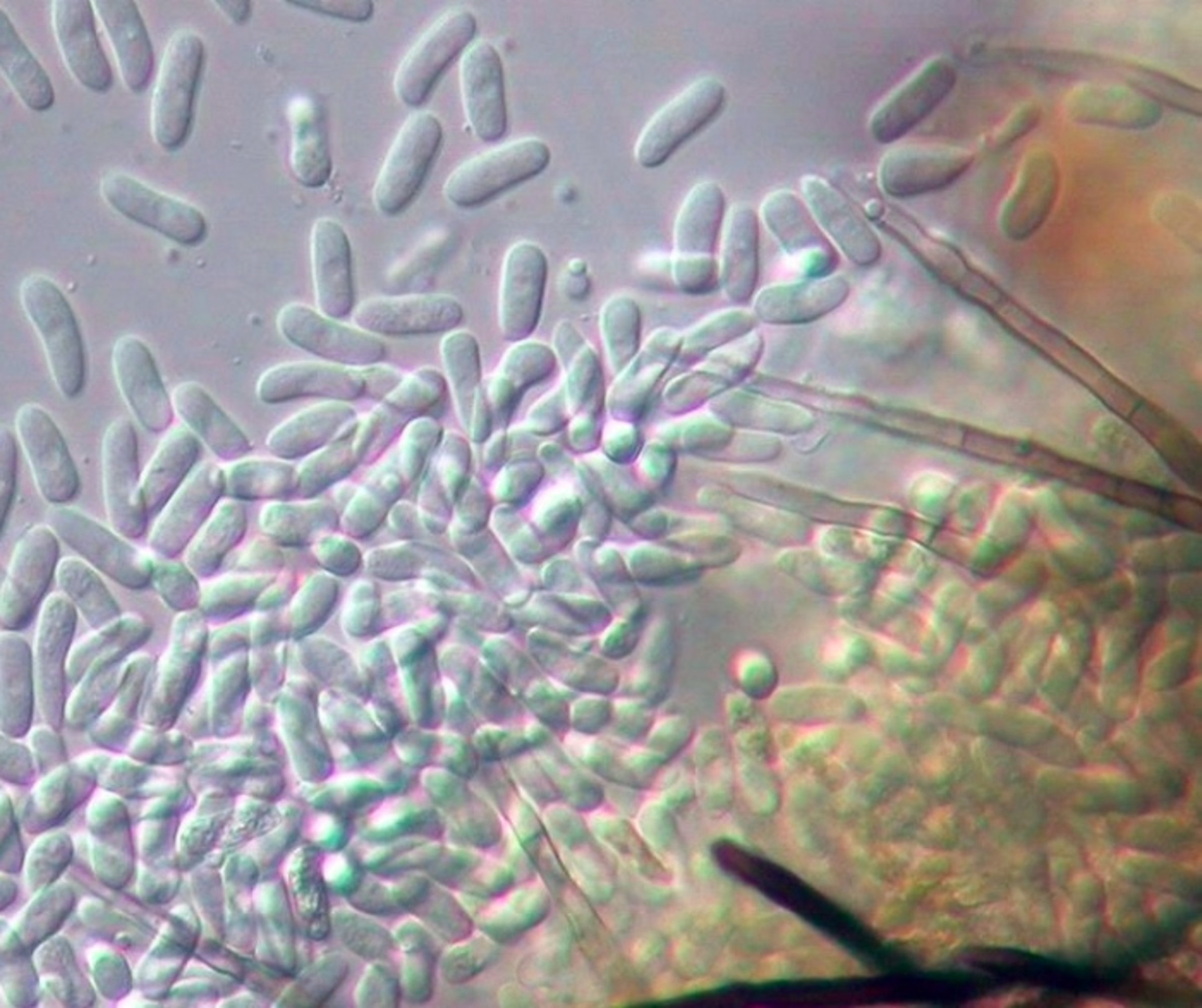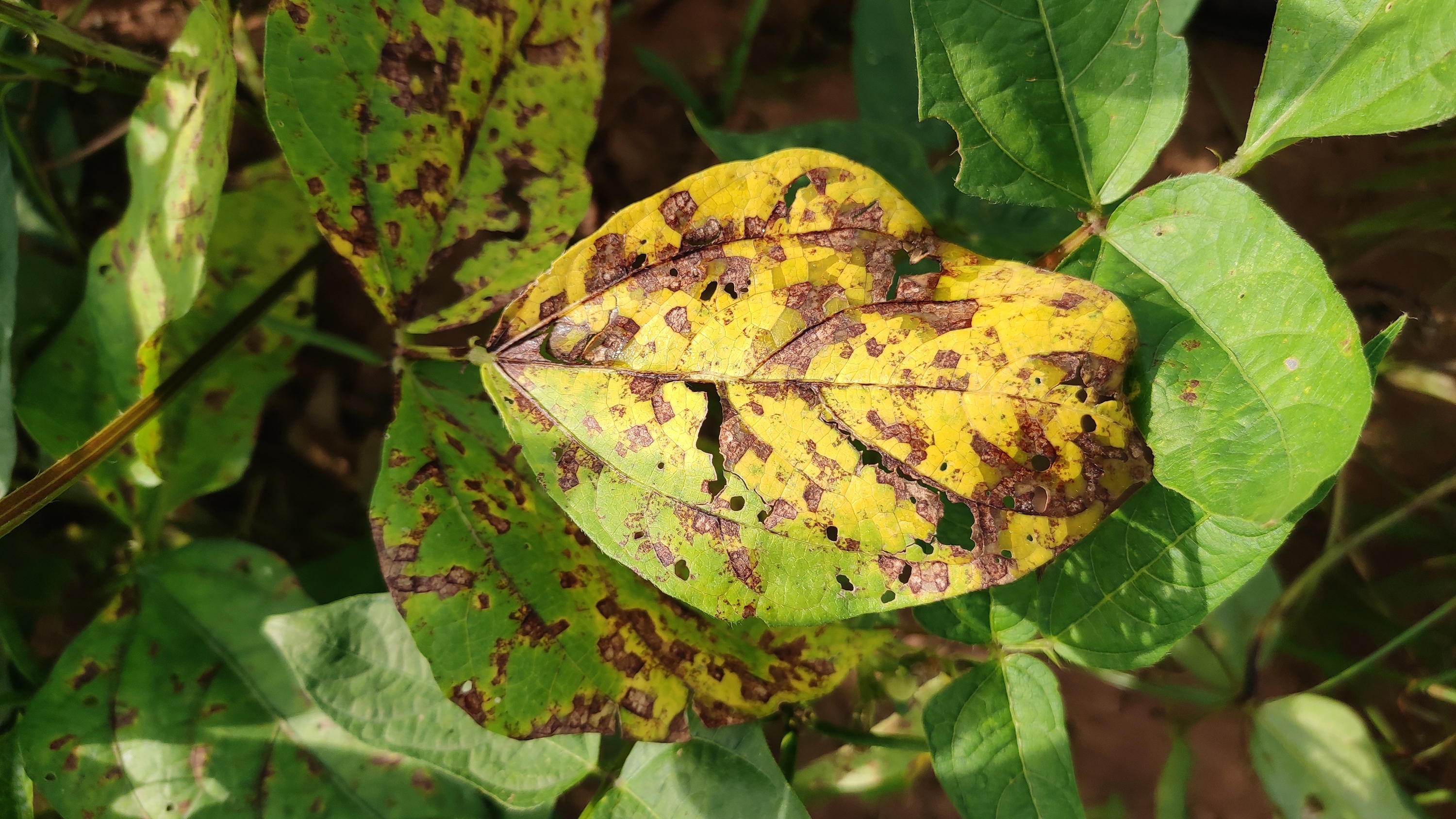-
Circular, black, sunken spots with dark center and bright red orange margins on leaves and pods.
- Severe infections spread entire leaf gives blighted appearance
- Affected parts wither off.
Causal organism
Colletotrichum lindemuthianum
 Conidia
Conidia Survival and mode of spread
- Survival: Seed, plant debris and soil-borne
- Primary spread: Seed and plant debris
- Secondary spread: air-borne conidia
- Rain splash also helps in the dissemination of the fungus
Favourable conditions
- Temperature : 15-20°C
- Relative humidity : Above 90 per cent
- Cloudy rainy weather
Integrated disease management
-
Remove and destruct plant debris
- Seed treatment with Carbendazim @ 2g/kg
- Spray any one of the following fungicides at initial symptom appearance
Mancozeb 72 WP @ 1000g/ha
Carbendazim 50% WP @ 500/ha
Tebuconazole 50% + trifloxystrobin 25% WG @ 500 g/ha
Tebuconazole 25.9% EC @ 500 ml/ha
|
Anthracnose infected plants
|



